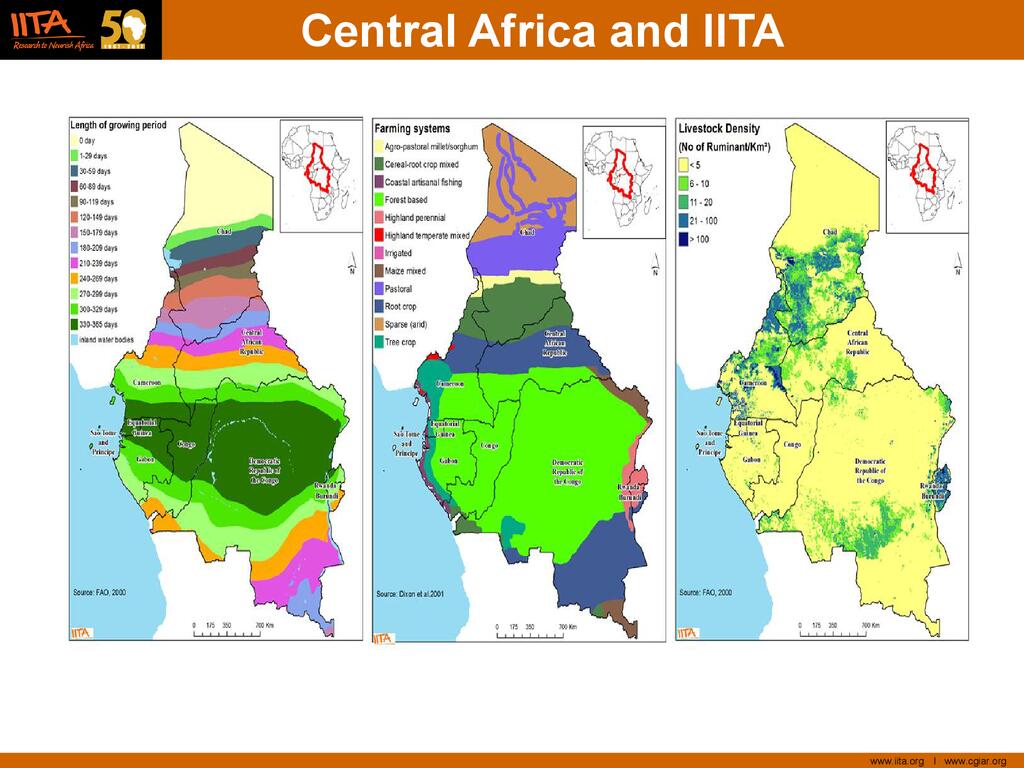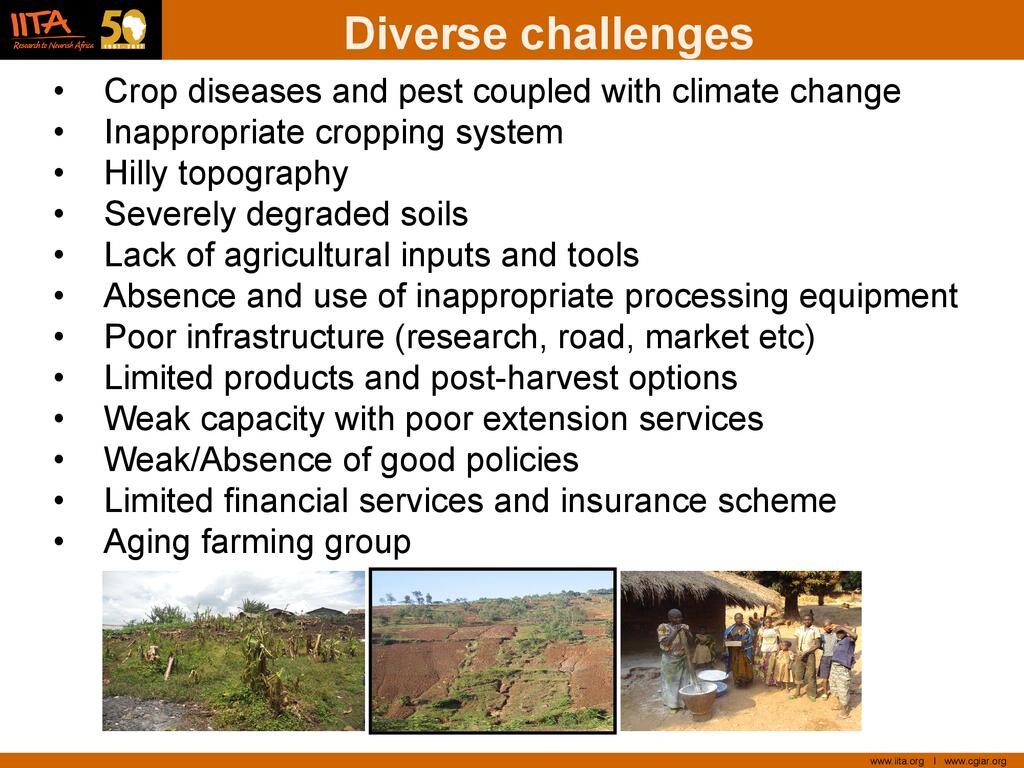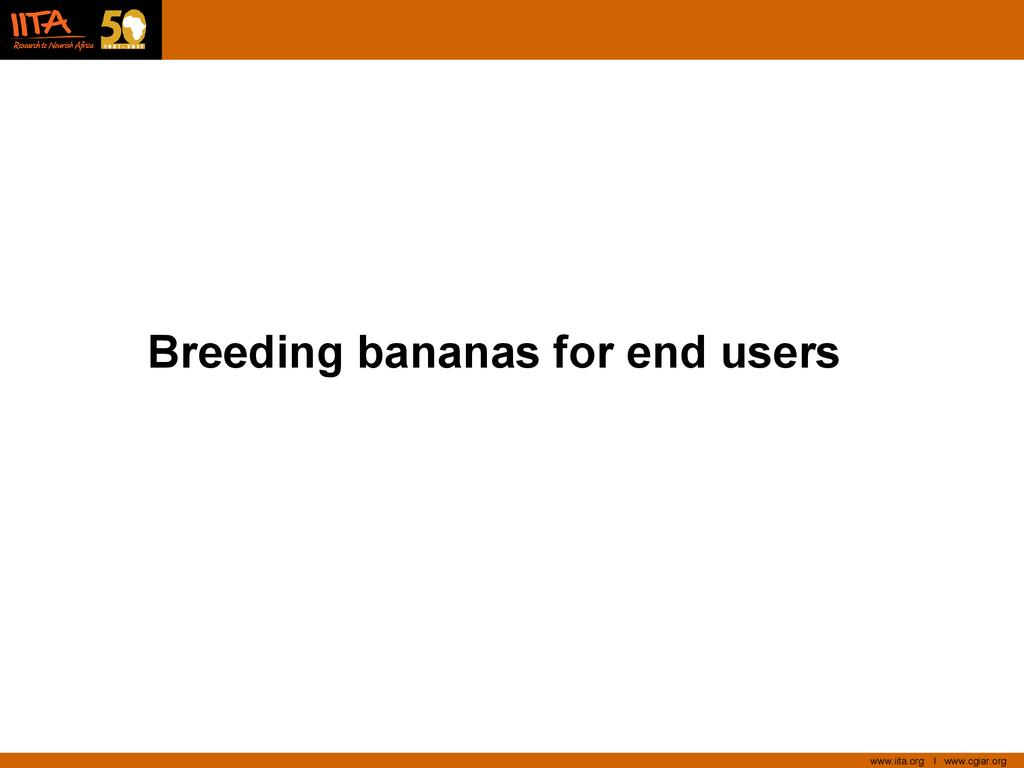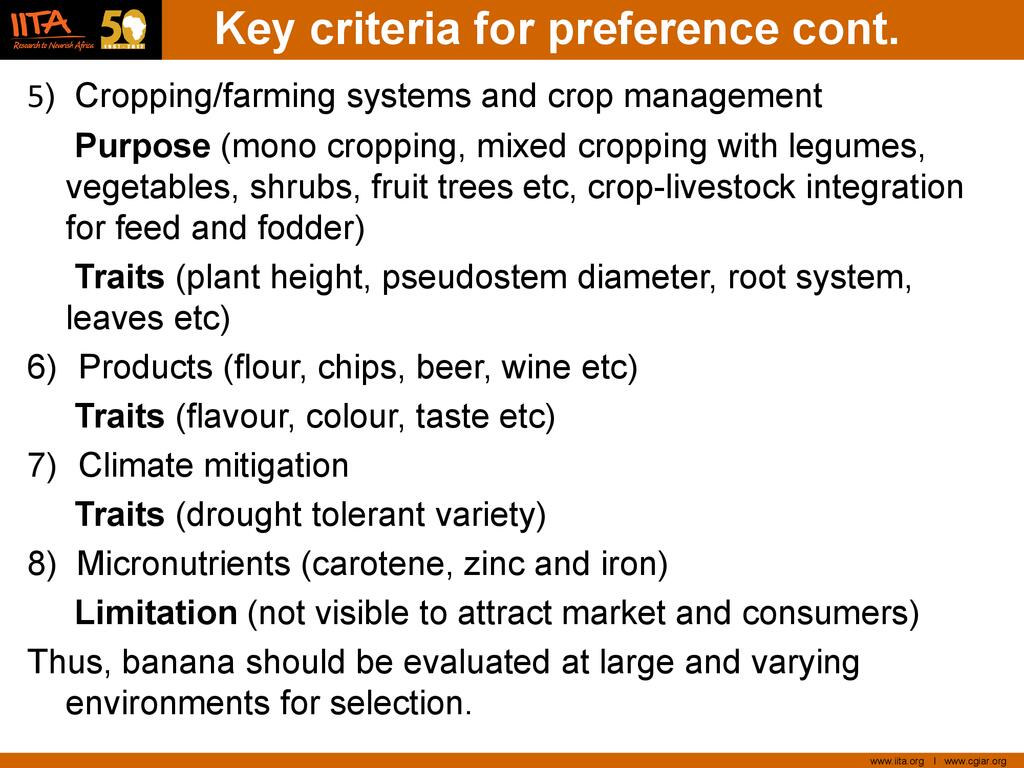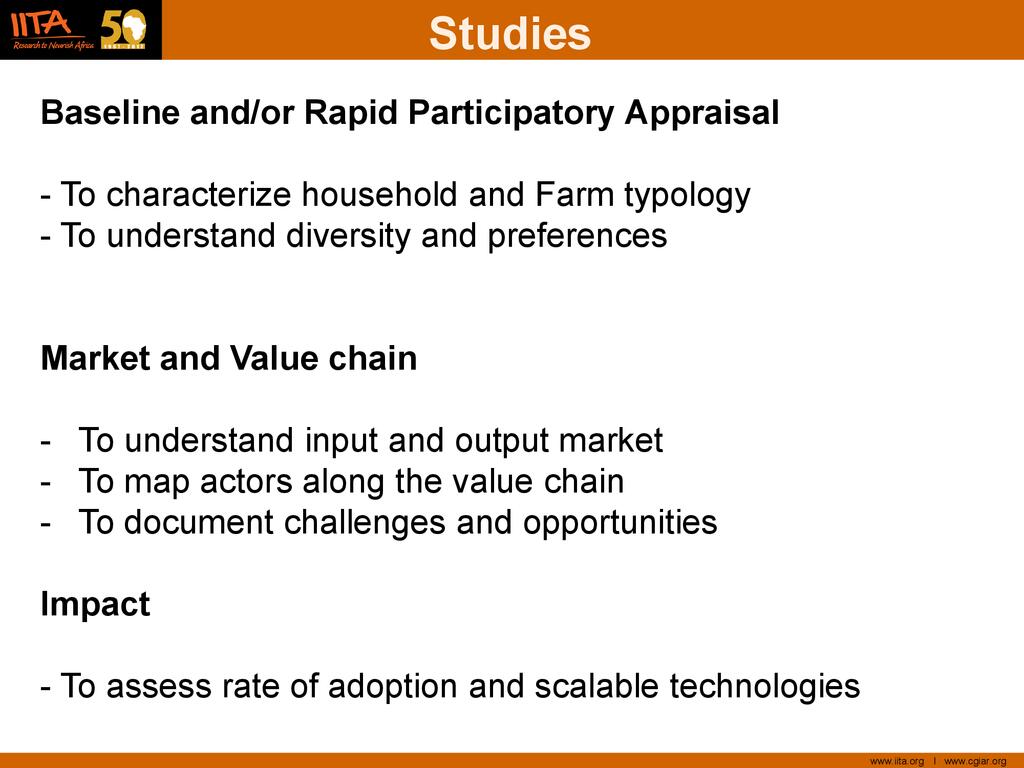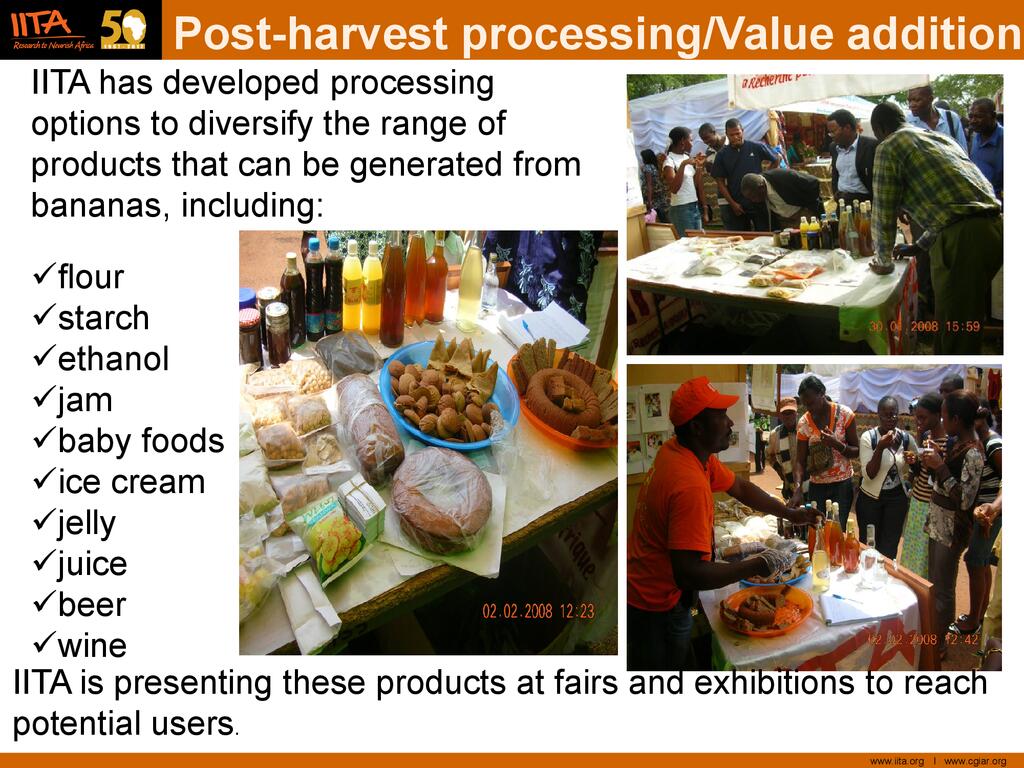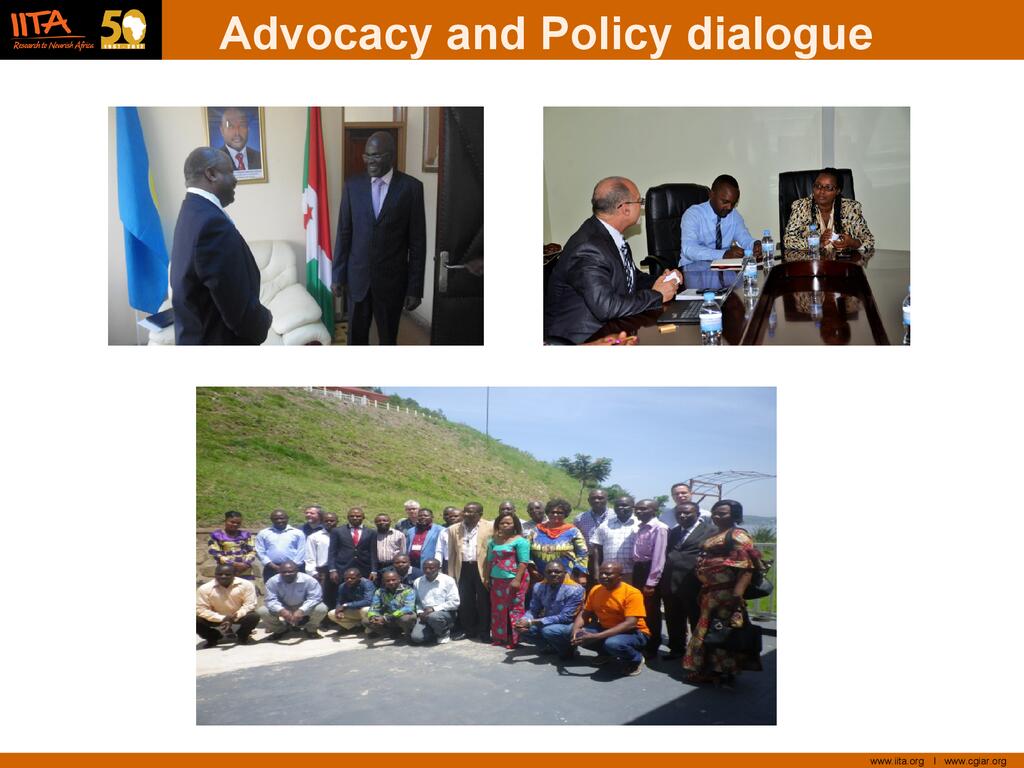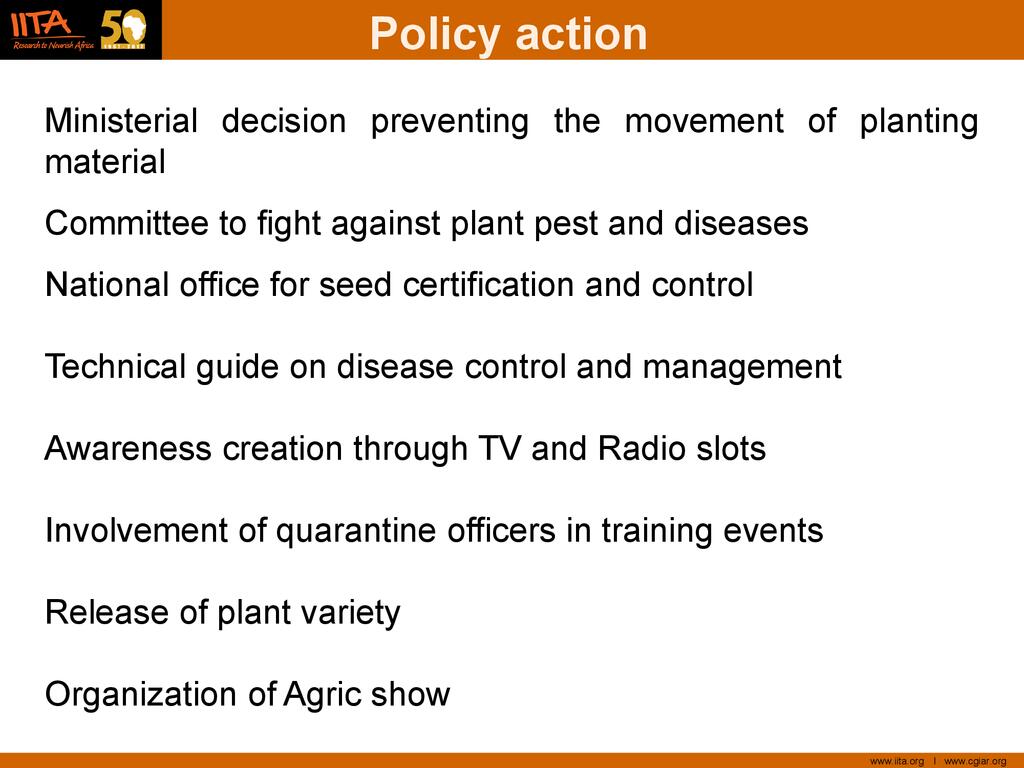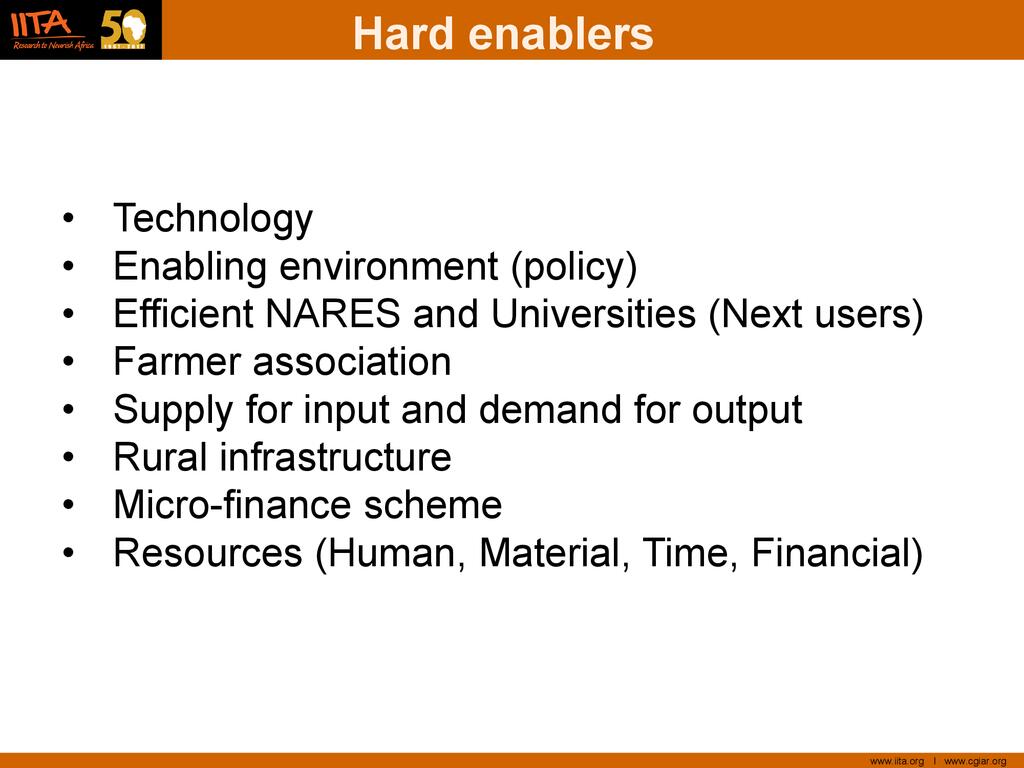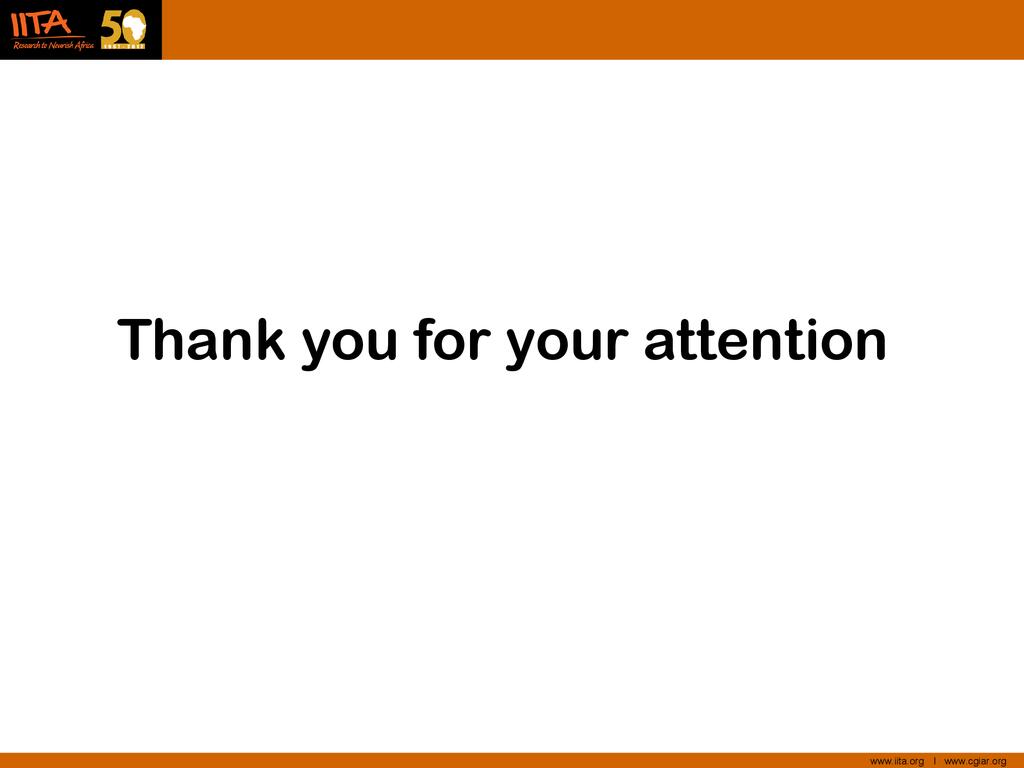Presented By: Emmanuel Njukwe
Event: 2019 East Africa Highlands Symposium (26-11-2019)
Session: Banana Xanthomonas wilt (BXW) caused by the bacterium Xanthomonas campestris pv. Musacearum (Xcm) and Banana bunchy top disease (BBTD) caused by banana bunchy top virus (BBTV) (genus Babuvirus, family Nanoviridae) are two most important banana diseases threatening food security in the Great Lakes region. Because of poor government policy, the financial commitment from the government to banana research is negligible and NARS also lack both the financial and human resources to overcome these diseases. In Kivu, it is estimated that due to BXW, households may lose up to USD 620 per annum (USAID, 2010). Overcoming BXW and BBTD has been a great concern and require urgent attention as they have the potential to wipe out plantations, which in turn can cause environmental damage with economic impacts on household. The concept of tissue culture mother gardens as starting stocks for the supply of healthy planting material has bridged the gap between the farmer and the private suppliers of tissue culture planting material and a significant increase in the demand for tissue culture plants has been observed. Stakeholders’ workshop is regularly organized to assess the outcomes and impact of technologies being disseminated and potentials for sustainability.
Emmanuel Njukwe - IITA is a research scientist in Burundi and coordinator of partnerships in the Africa Great Lakes Region with local research, farmers and development partners with special focus on outscaling technologies and training tools to the end users. Emmanuel is experienced in seed systems and participatory germ plasm introduction and evaluation, and has facilitated IITA improved germplasm (cassava, banana, yam) in East and Central Africa where some have been released.



